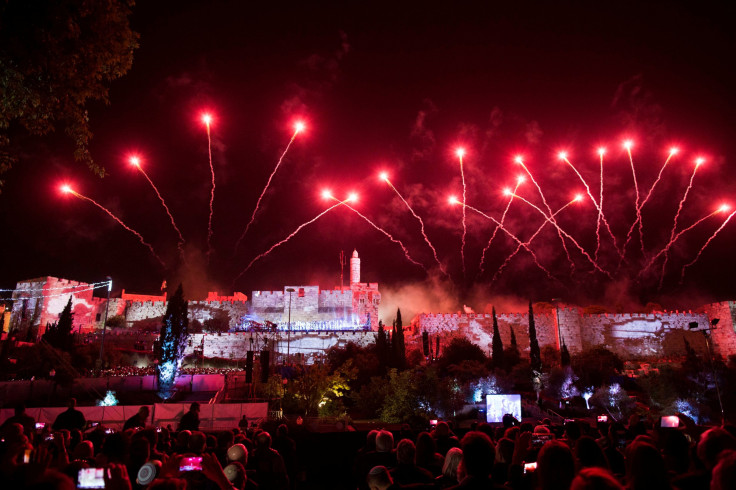What Is The Six Day War Or The June War? Facts About The 1967 Arab-Israeli War On Its 50th Anniversary

The Six-Day War, also known as the June War or the 1967 War or the third of the Arab-Israeli Wars, was a brief but decisive clash that redrew the map of the Middle East. June 5, 2017, marks the 50th anniversary of the war when Israel routed the armies of Egypt, Jordan, and Syria in less than a week, despite being outnumbered nearly three-to-one in men, planes and tanks.
Israeli forces, led by then Minister of Defense Moshe Dayan, rapidly defeated the four Arab states — Egypt, Jordan, Syria, and Iraq — and gained control of the old city of Jerusalem. In six days of fighting, Israel occupied the Gaza Strip and the Sinai Peninsula of Egypt, the Golan Heights of Syria, and the West Bank and Arab sector of East Jerusalem, both previously under Jordanian rule. By the time a United Nations cease-fire took effect on June 11, Israel had more than doubled its size.
It was one of the biggest underdog victories in the history of warfare, stunning the world but also creating a series of problems that continue to strain Arab-Israeli relations to this day.
Fifty years later, among the concerns that still remain are the border issues. For many Israelis, returning to the boundaries before the war is not a point of contention. But several Arab states and many in the west, including the Unites States, continue to press for it.
Isreal declined the U.N. Security Council's call for a withdrawal from all the occupied regions and set up military administrations in the occupied territories. It also made clear that Gaza, the West Bank, the Golan Heights, and the Sinai would be returned only in exchange for Arab recognition of the right for Israel to exist and guarantees against future attacks. On Jerusalem, Dayan had said: “We have returned to our holiest places, never to part from them again.”
With the effects of the Six Day War still affecting the 21st Century peace process, it’s no surprise the nearly 50-year-old conflict still continues to fascinate. Here are some little-known facts about the Six Day War as stated by Steven Pressfield, author of The Lion’s Gate: On the Front Lines of the Six Day War
- After six days of heavy fighting, Israeli casualties were between 776 and 983 killed and approximately 4,500 wounded.
- Egypt had between 9,800 and 15,000 killed and wounded and 4,300 captured.
- Estimates for Jordan are about 700 killed and 2,500 wounded. Over a 1,000 deaths were reported in Syria.
- Total Arab states’ losses: between 13,200 and 23,500 killed and more than 5,500 captured.
- As many as 46 of the 240 Israeli aircrafts were destroyed in action. The IDF also lost 800 tanks. The Arab states’ tally was 452 planes and hundreds of tanks destroyed.
- When Israeli paratroopers captured the Wailing Wall on June 7, 1967, many of them were so inexperienced in their own faith they did not even know how to pray.
- Israel’s recognized allies — The U.K., France, and the U.S. — sent no aid of any kind during the war. In fact, France cut off all arms shipments to Israel.
- Defense Minister Moshe Dayan’s black eye patch became probably the most recognized symbol of the Israeli military in press and TV coverage of the Six Day War. Dayan lost his eye in Lebanon — not fighting Arabs, but during World War II.
© Copyright IBTimes 2024. All rights reserved.





















